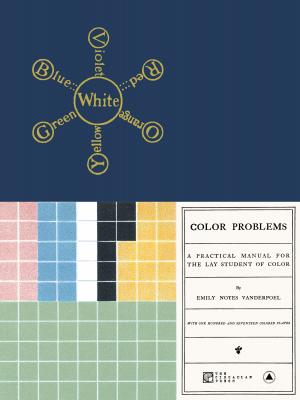Color Problems. Emily Noyes Vanderpoel
Чтение книги онлайн.
Читать онлайн книгу Color Problems - Emily Noyes Vanderpoel страница 5
 analysis from an Egyptian Mummy Case.
analysis from an Egyptian Mummy Case.COLOR PROBLEMS
COLOR PROBLEMS
CHAPTER I
COLOR—BLINDNESS
THE relation of color to light is much the same as that of music to sound. Color has its many hues, its long scales of tints and shades, its true and its false chords. Mere sound gives us but little pleasure; when developed, however, into its highest form, music, we are thrilled, as by the song of a bird, a favorite ballad, or a Beethoven Symphony. So in light, our enjoyment culminates at the glories of color in a flower or a sunset, at the shadows that play over the hills, or at the varied hues of a salt marsh. Hence we may aptly term color the music of light; and when we think of the wonderful ways in which it has been used and combined by painters and designers for hundreds of years, it must seem strange to us that its harmonies have not been as thoroughly studied and classified as those of sound.
Furthermore, color has come to be so closely connected with all the occupations and enjoyments of mankind that it is hard for us to realize that many persons are wholly or partially blind to its beauties. It is well known that there are some individuals with such perfect organs of hearing that they are able to distinguish the slightest sounds, who yet are so utterly unable to distinguish between two tones or between the harmonies and discords of music that they are said to have “no ear.” So there are those whose eyes are as well formed for seeing all and distant objects, but who are unable to see color as it is seen by people with normal eyes. Such individuals may be said to have “no eye” for color, and are scientifically termed “color-blind.”
This fact is not so well known; and, in view of it, any one interested in color will understand the wisdom of beginning a study of color with some knowledge of color-blindness, and, if possible, with having his eyes examined by an expert. Such an examination is a short and simple matter. Dr. William Thomson of Philadelphia has devised what he calls a “color stick,” on which colored wools are so hung and numbered that it is not even necessary to be an expert to use it, and with the help of which color-blindness can easily be detected. It has been used with great success over some fifty thousand miles of railroad. From the same hand has lately come a newer and simpler form of the same invention.
Color-blindness is seldom a total want of the power to see colors, but is rather a want of the true normal perception of colors, and it is more common than is generally supposed. The most common form of the defect, which has been called by some “red-blindness,” is that of not seeing red, but of confusing it with green, as, for instance, being unable to see any difference between the red flower of a geranium and the green of its foliage; between green grass and red autumn leaves. A color-blind person will sort variously colored wools in the strangest way, putting the reds among the greens, and mixing the blues and the violets together.
Plate I shows part of the result of an examination of a color-blind man by Doctor Thomson. The patient was given one hundred and fifty different-colored wools to sort in little heaps according as he saw them to be red, blue, green, etc.; he seemed to hesitate over but few of them. These he put by themselves in a heap called neutral. To a normal eye the result is almost incomprehensible, as he mixed green with all the other colors and made other as strange combinations. Di-chromatic vision has been suggested as a fitting term for such defective color perception, as colors to red-blind persons amount to but two, viz., yellow and blue, with a long range of neutral grays between.
There are other forms of color-blindness which are less common. Some persons seem to see but red and blue, classing yellow and green with red. A less common defect is that of not seeing violet, while there are a few cases on record where all sensation of color is wanting, everything appearing in differing degrees of gray. One such instance coming under the notice of the writer occurred temporarily from over-strained nerves in a person gifted with an abnormally fine color-sense. No doubt some people are born color-blind, but the defect is also brought on by disease, by the excessive use of tobacco, alcohol, and other stimulants, and may, or may not, prove permanent. According to Abney, the disease begins